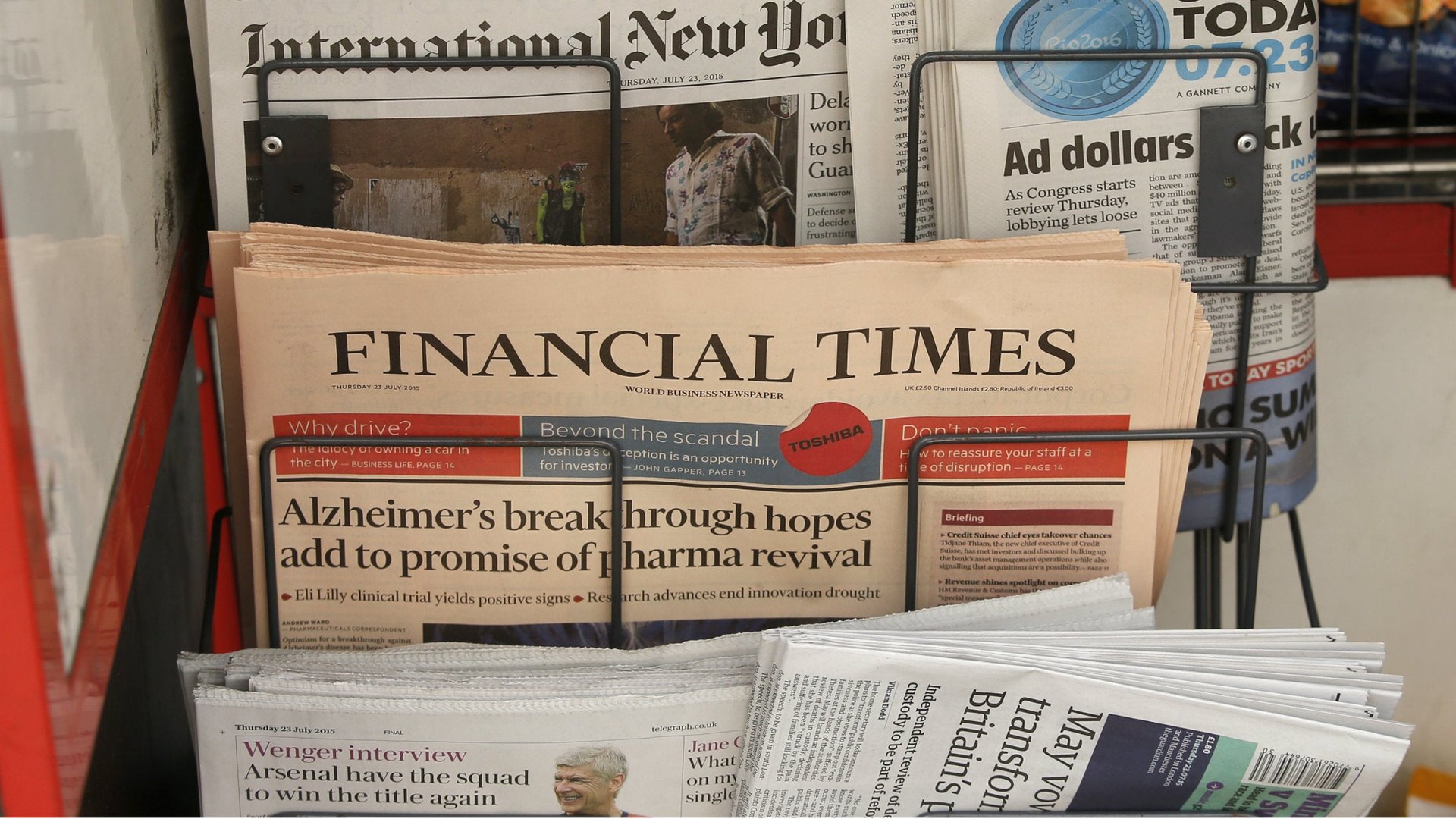What you should binge-read on the Financial Times’ paywall-free website today
The Financial Times, which was sold earlier this year to Japan’s Nikkei for $1.3 billion, is running an experiment today that’s become a common play for traditional media houses—the company has lifted its restrictive paywall to make everything free for new readers until midnight tonight.


The Financial Times, which was sold earlier this year to Japan’s Nikkei for $1.3 billion, is running an experiment today that’s become a common play for traditional media houses—the company has lifted its restrictive paywall to make everything free for new readers until midnight tonight.
It’s a naked bid to get new eyeballs, and most importantly, new paying subscribers, and it has some precedent. Last year The New Yorker dropped its paywall for several months, and saw subscribers jump by 85% from the year before when the paywall returned.
The FT’s website can be, if you’ll forgive us for saying so, a bit finicky. And anyone who just plain ignores things on social media that lead to paywalls (millennials, we’re looking at you) probably hasn’t tried to navigate it at all. So here are some pointers from Quartz. These recommendations are, of course, highly subjective.
The “Lunch with the FT” column is good place to start for the a wide-ranging array of interviews with notables from Angela Merkel to Sean P. Diddy Combs to Thomas Piketty to Sheikha Moza, written in an informal and often irreverent style. As Henry Mance memorably wrote about lunch with British media kingpin Richard Desmond this year:
“We’ll have that one,” he says, before I can intervene. As the sommelier skips away, the sum of £580 lingers on my retina.
So this, I think, is how it feels to be screwed by Richard Desmond. It took less than 10 minutes.
It’s not all fine dining and Bordeaux. In 2013, David Pilling sat down with Shin Dong-hyuk, a survivor of a North Korean gulag, over waffles and bulgogi, for example, for a stilted and uncomfortable interview that’s still a compelling read.
Here is a sampling of 30-odd FT lunches that Quartz collected, including the interviewee, location, and meal of choice.
Peer in on the one percent with How to Spend It, a monthly supplement, and Tyler Brûlé’s The Fast Lane column in FT Magazine, both great sources of guilty pleasure. The former is highly aspirational, telling you which tailored shoemaker to seek out once you have millions in the bank; the latter is more voyeuristic, allowing you to join the editor of Monocle magazine as he flies around the world or, as in last week’s column, finally sells his Swedish island.
FT Magazine is a great departure from purely business or financial news, and serves up fascinating and lengthy features on everything and anything. Its far-flung profiles include a 2,400-word feature on a tiny noodle restaurant in southwest China’s Chengdu, which has a 500-yuan ($80)-per-head tasting menu, or this profile of Jin Xing, a Chinese army colonel-turned dance star.
The Lex column, with its clear, punchy, opinionated style, influenced an entire generation of financial analysis writing—from Reuters Breakingviews to Bloomberg View to Quartz.
Lucy Kellaway has been the FT’s wry “management” columnist for 30 years. As she wrote this year about her debut column, and the evolution of business since, “The only product that is every bit as attractive as it was back then is alcohol.”
Happy reading.